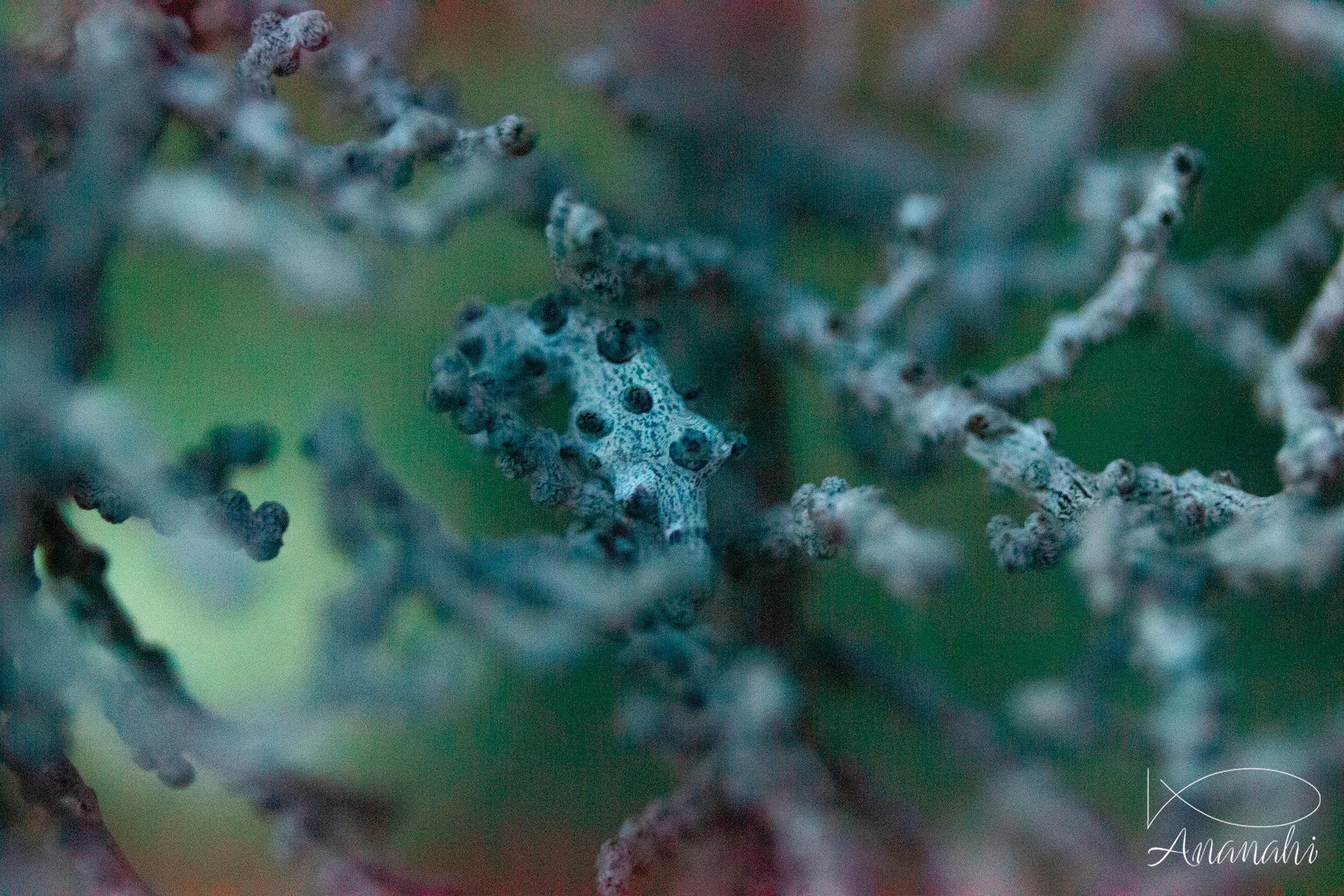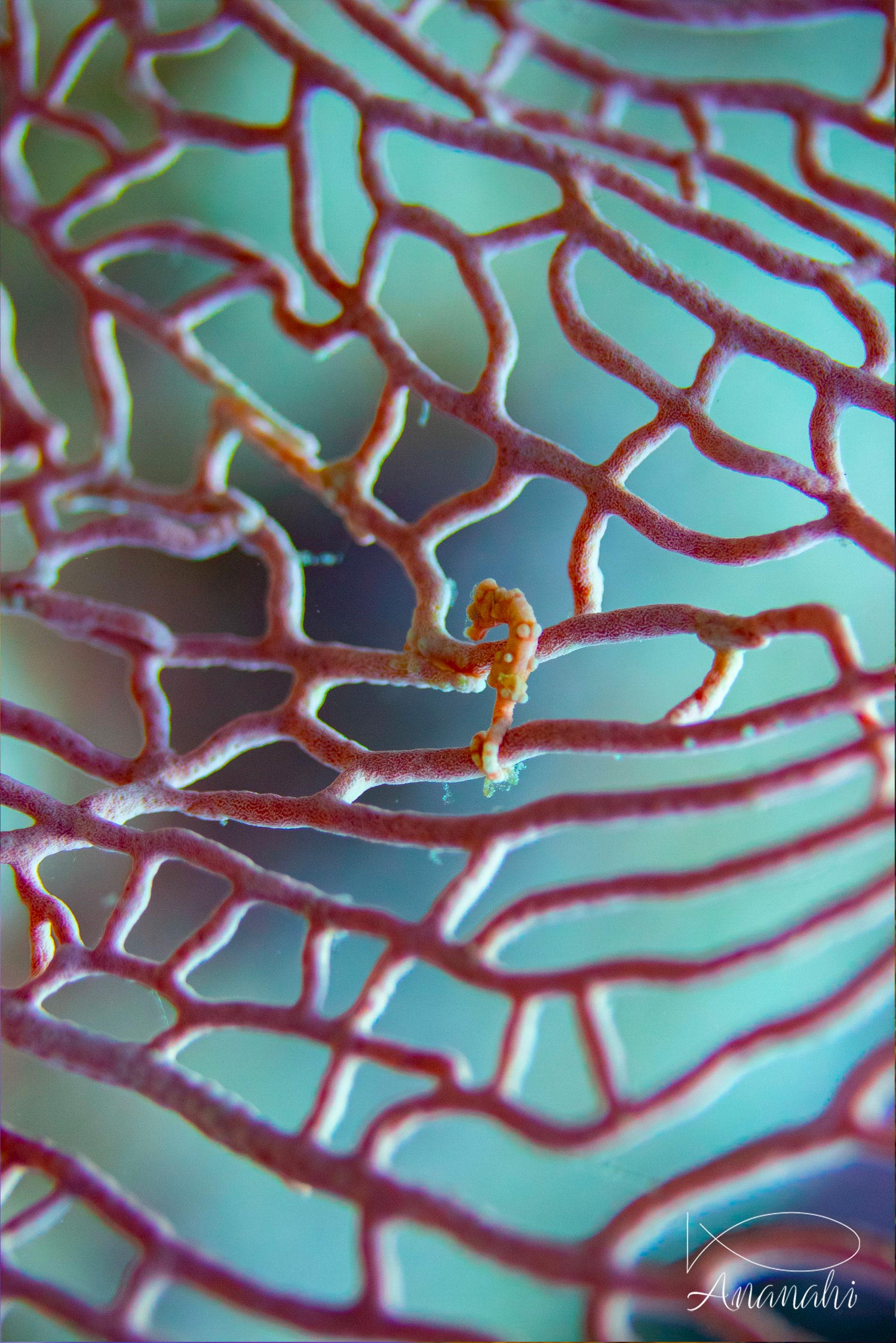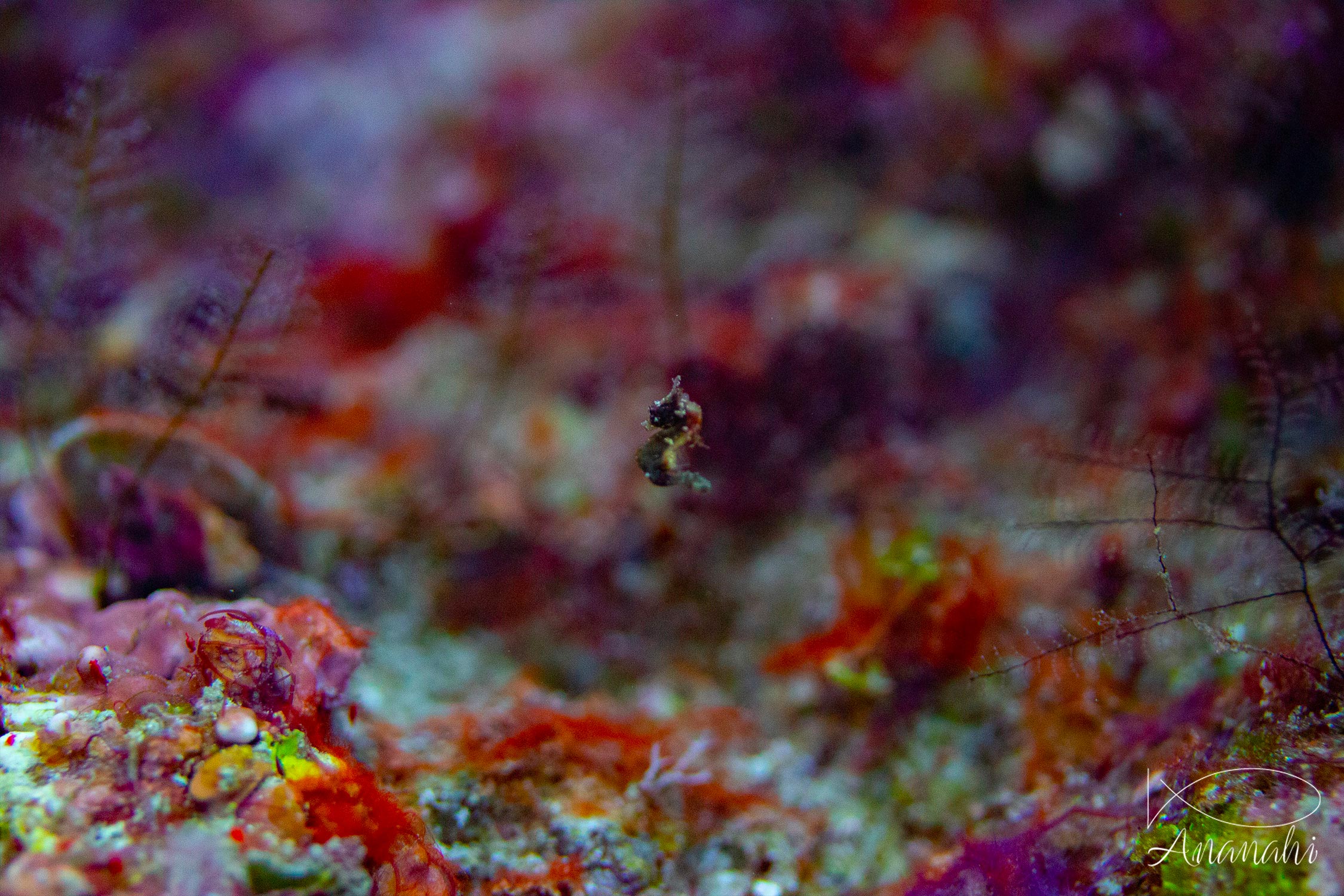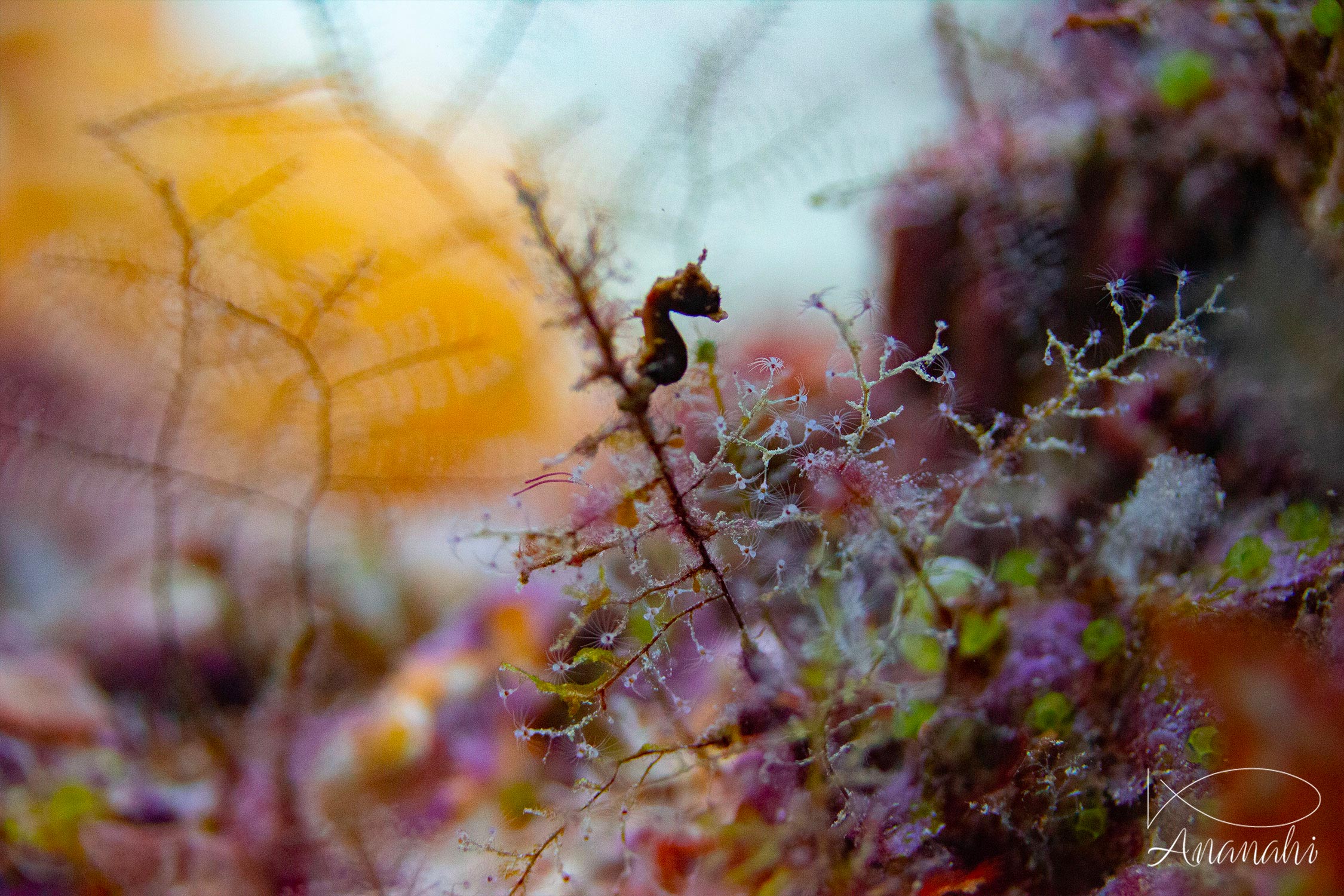
Scientific name: Hippocampus bargibanti
Size: Up to 1 inche maximum
Color: Tint varies according to the support
Distinguishing feature: Very small, his body is filled with multiple bulbous growths
Where did we see it: Bali and Gili, Raja Ampat

Scientific name: Hippocampus bargibanti
Size: Up to 1 inche maximum
Color: Tint varies according to the support
Distinguishing feature: Very small, his body is filled with multiple bulbous growths
Where did we see it: Bali and Gili, Raja Ampat
This seahorse is mostly visible in Asia. Very small, it can be hard to find.
However, if you know which gorgonians to look for (muricella plectana and muricella paraplectana) and that you take your time to find it, this shouldn't be a problem!
This hippocampus is carnivorous and feeds on small crustaceans.
It is also ovoviparous and they are the males that incubate the eggs, not the females.






Turtles are in economy mode when they are sleeping. If they are woken during night, they may not have enough air to return to surface.
So, please be careful during night dives!
The whale shark is the largest fish in the world!
Some whales are larger, but they are mammals, not fish!
The kakihona sushi (sushi wrapped in persimmon leaves) are really the best!
To eat them, you have to go to Nara!